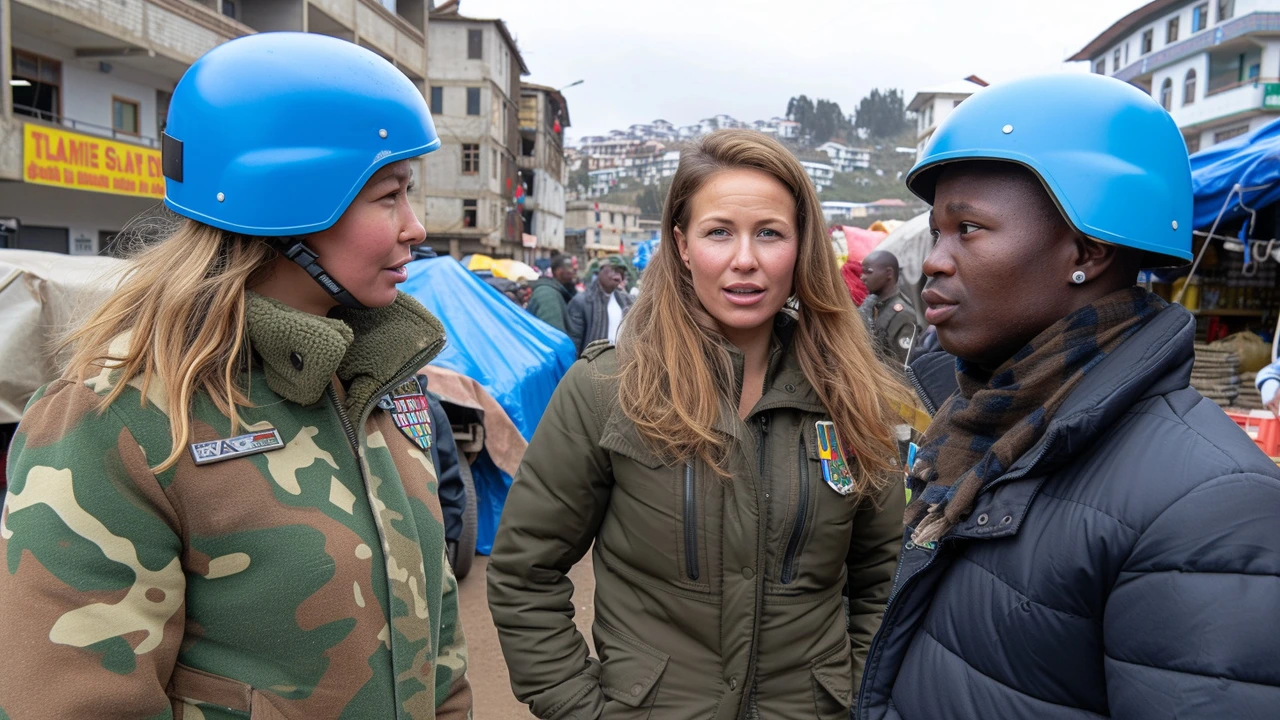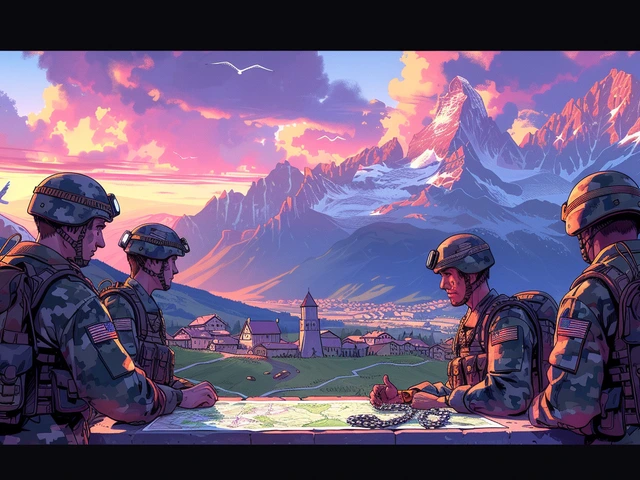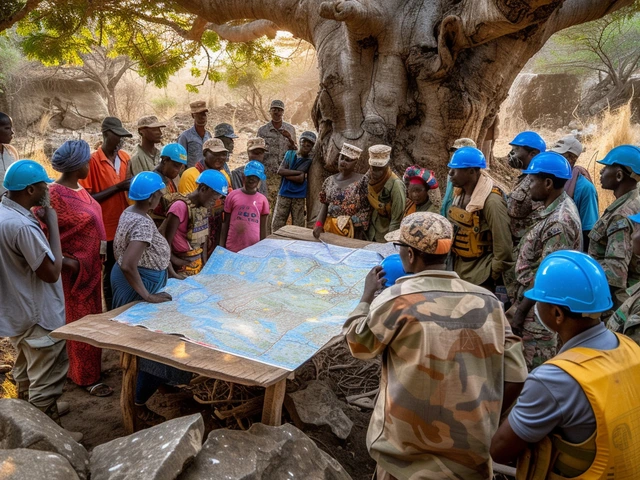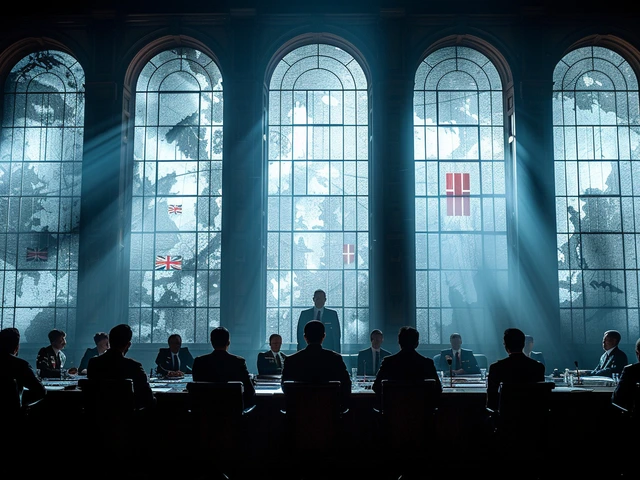Understanding the Concept of Peacekeeping
Well, there's nothing like settling down with Luna at my feet for a good keyboard clacking session about peacekeeping! Peacekeeping isn't as complex as it sounds, darling readers. Though many people associate it directly with the United Nations, the term peacekeeping itself encompasses quite broad actions taken by the global community to maintain or re-establish peace in areas affected by conflict.
To break it down for you - Peacekeeping involves diplomatic, military and humanitarian efforts geared towards achieving ceasefires, facilitating negotiations, protecting civilians, and promoting peace, stability and the rule of law. While it's not all sunshine rainbows, it certainly is an admirable dedication that deserves our recognition. I kind of liken it to training a headstrong pup like Luna, it takes time, love, patience and a teeeeny bit of stubbornness. Just kidding! But you get my point, right?
The Historical Role of Peacekeeping
When I first started looking into peacekeeping, the rich history of it absolutely fascinated me. Peacekeeping in the sense we know it today did not exist prior to the formation of the United Nations. It officially began in 1948 when the United Nations Truce Supervision Organization (UNTSO) was established to observe and maintain the ceasefire after the 1947-1948 Arab-Israeli War. Since then peacekeeping has done quite the transition - it started as a lightly-armed 'buffer' between warring parties during the Cold War era, and blossom into multidimensional operations involving various tasks linked to state-building and socio-economic recovery. It’s quite inspiring how much can change, huh?
Significant Peacekeeping Missions
As diverse as the countries Luna dreams of visiting (Oh, she does love her doggie dreams!), peacekeeping missions have been deployed in every corner of the globe. Each mission is unique in its challenges, successes, and impacts. They indeed range from the tiny island nation of East Timor, to strife-torn countries in Africa like Liberia, Sierra Leone and Sudan, to the former Yugoslavia in Europe, and to the Middle East conflict zones. Not forgetting, of course, the longest-running mission, UNTSO, that still operates today. Luna and I can't help but raise our paws (and hands) in salute to the steadfast dedication involved.
Challenges Faced by Peacekeepers
We all love a little grumble about our workloads, don't we? I mean, you should see Luna when her favourite toy is just out of reach - oh, the drama! But let's consider the peacekeepers who operate, quite literally, in the field and suddenly our complaints seem rather small. They face numerous challenges including logistical or infrastructural issues, cultural differences, evolving conflict dynamics, lack of resources, local community mistrust, and political impediments just to name a few. Yet they persevere - quite the lesson in resilience.
Peacekeeping’s Impacts on Global Peace
By playing a vital role in restoring and maintaining peace in troubled regions, peacekeeping has indeed made a significant contribution to world peace. It has helped to end wars, brought enemies to the negotiating table, and reduced the number of casualties and displaced people. Moreover, it has helped to rebuild war-torn societies by supporting democracy, human rights, and economic development. So you see, not all heroes wear capes, some of them wear blue helmets.
The Transformative Power of Peacekeeping
If you're still with me and Luna at this point (she sends a wag and a woof by the way!), let's delve into how peacekeeping transmutes conflict zones. Peacekeeping has come a long way since its inception, and today missions are imbued with a transformative goal - to help societies move from war to peace sustainably. This involves supporting fair elections, reforming public institutions, promoting human rights, facilitating rule of law, and rebuilding economies. I’d say that's a pretty commendable job description, wouldn't you agree?
Peacekeeping and Women
The role of women in peacekeeping may not be highlighted as regularly as it should be - it's time to shine a light on their exemplary effort. Women peacekeepers have proven that they can perform the same roles at the same standards and under the same difficult conditions as their male counterparts. In fact, women are often better-placed to access populations that men cannot - such as women in strict gender-segregated societies - which makes their contribution indelible.
When it comes to raising awareness and advocating for women's rights and gender equality in conflict-affected environments, their role is unmatched. So women, let's keep breaking those glass ceilings (and any other metaphorical barriers) and continue to be the change-makers that the world needs!
Promoting Peace: The Way Forward
Peacekeeping, without a doubt, has contributed immensely to world peace. But, there's always room for improvement in any field. To strengthen peacekeeping, the international community needs to address the challenges faced by peacekeepers. This is a commitment that must be upheld not just by the United Nations, but by every single one of us. After all, the world's peace is in our hands.
Additionally, greater emphasis must be placed on peaceful conflict resolution and prevention. Let's not forget economic development, after all a prospering society is more likely to enjoy lasting peace. Finally, last but certainly not least, let us not forget the importance of community engagement and empowerment, because peace does not descend from the top down, but is fostered from the ground up, starting with individuals just like you and I.
As Luna would say if she could talk (a scary thought, I know!) - let's all be peace-loving pooches! Okay, I may love puns a little too much. But on a serious note, let's work to ensure that peacekeeping's contributions to world peace remain ingrained in our collective quest for global harmony.








